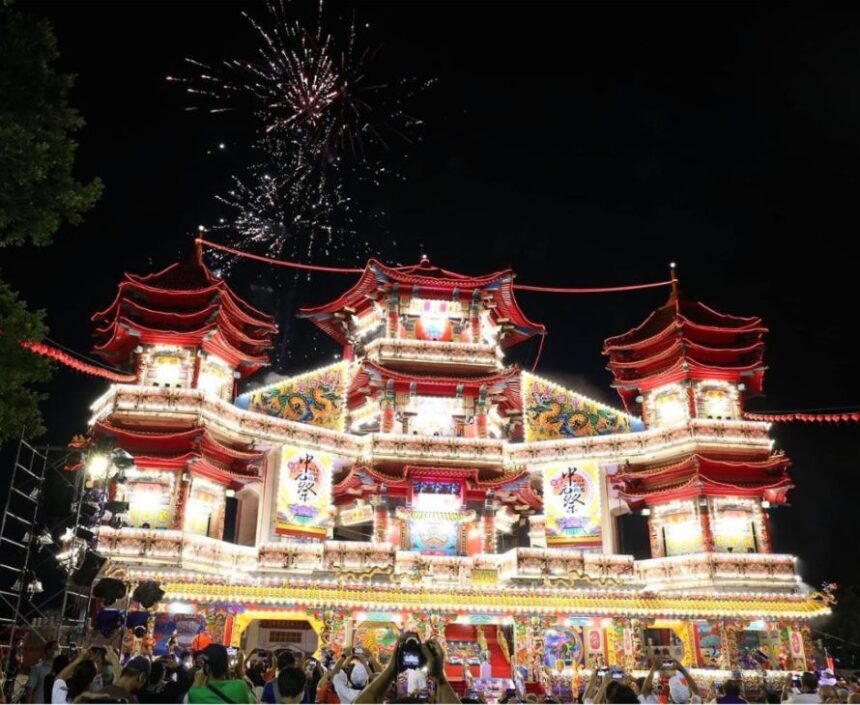The Jade Rabbit, also known as the Moon Rabbit, is a legendary figure in East Asian folklore, particularly in China, Japan, and Korea. Its association with the Mid-Autumn Festival has a rich history.
While there are many well-known versions of the tale of how Chang’e ascended to the moon, that of the jade rabbit has been somewhat eclipsed. The practice is likely to have stemmed from ancient people’s respect for nature and curiosity for astronomy. Today, various cultures across Asia have their own festivals around this time of the year linked to the moon that primarily celebrate the autumn season of harvest and thanksgiving. We take a look at how various countries across Asia celebrate it with their unique traditions and customs.
China
In Chinese mythology, the Jade Rabbit is said to live on the moon, where it pounds the elixir of immortality with its companion, the Moon Goddess Chang’e. Here, the folklore is that Jade Emperor, or Ruler of Heaven, needed help producing a powerful potion of immortality. Since humans were full of flaws, the celestial god turned to the animal kingdom for assistance.
He disguised himself as a starving old man and asked several animals, including a rabbit, to help him find food. The rabbit selflessly offered its own flesh as sustenance by throwing itself on the man’s fire. The virtuous animal, in turn, was elevated to the blissful Moon Palace to make the immortality potions.
In Chinese culture, there are other tales about how a rabbit ended up on the moon. One Chinese legend says a rabbit fairy saw the innocent Chang’e in lonely exile while on his way to heaven and sent his youngest daughter to keep her company. In another, the rabbit is actually Chang’e in animal form, punished by the gods to make medicine for eternity.
In Hong Kong, the Mid-Autumn Festival is one of the major annual holidays, with festivities ranging from admiring the full moon and lighting paper lanterns to sharing mooncakes and fruit with friends, family and loved ones.
Japan
In Japanese folklore, the Jade Rabbit is known as the “Tsuki no Usagi.” According to Japanese legend, there is a rabbit that lives on the moon and pounds mochi rice cakes with a mallet and mortar. Some say this fable is based on a Buddhist tale, others say it has to do with wordplay because the Japanese term mochizuki means “full moon” but also sounds like “mochi pounding”. The Jade Rabbit is often depicted in Japanese art and literature, particularly during the Mid-Autumn Festival. Residents decorate the streets with pampas grass (susuki) to protect against evil spirits. Certain food offerings also double as decorations.
Korea
In Korean folklore, the Jade Rabbit is known as the “Dalbit-tokki.” It is said to live on the moon, where it pounds the elixir of immortality with its companion, the Moon Goddess Seonyeo. This legend was introduced from China and became popular in Korea during the Goryeo Dynasty. The Jade Rabbit is often depicted in Korean art and literature, particularly during the Mid-Autumn Festival. Some traditions bear similarities with Chinese ones, as Koreans travel and take gifts to their parents’ homes to wish them a long and healthy life.
Jade Rabbits in popular culture
– Animations and comic books/graphic novels: Featured in series like “Sailor Moon” and “Cardcaptor Sakura”.
– Chinese Literature: Appears in classic novels like “Journey to the West” and “Dream of the Red Chamber”.
– Film and TV: Featured in movies like “The Legend of the Moon Goddess” and TV series like “Mythos”.
– Video Games: Appears in games like “Jade Empire” and “Final Fantasy XIV”.
– Music: Inspired songs like “Jade Rabbit” by Chinese singer, Wang Feng.
– Art and Fashion: Depicted in traditional Chinese art, and featured in fashion designs and accessories.
– Astronomy: The Jade Rabbit is the namesake for the Chinese lunar rover, Yutu (Jade Rabbit).
ALSO READ: Celebrating the Hungry Ghost Festival: essentials and superstitions













